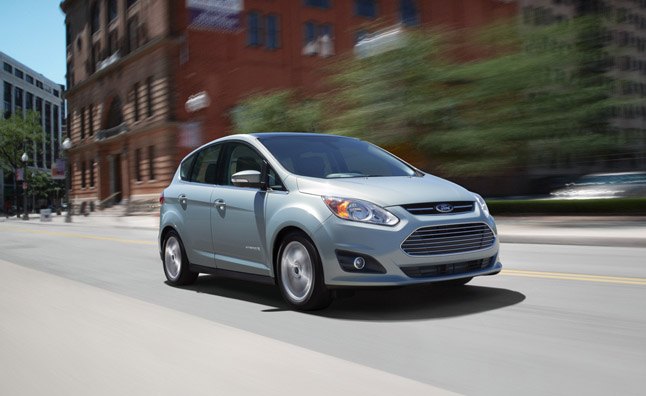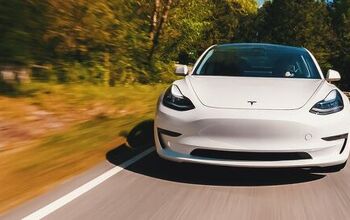What MPGe Is – And How To Figure Plug-in Energy Costs
The measurement of “miles per gallon equivalent” (MPGe) is a solution federal agencies decided upon a few years ago to help shoppers compare energy costs for plug-in vehicles to fuel costs for conventional vehicles.
In brief, MPGe represents the number of miles a vehicle can travel using a quantity of “fuel” – actually electricity – with the same energy content as one gallon of gasoline. A gallon of gasoline is roughly equal to 33.7 kilowatt-hours of battery power.
The MPGe standard was developed with input by focus groups and “experts” following a “keep it simple” dictate for consumers who said they weren’t familiar with electric billing, or terms like kilowatts and kilowatt-hours.
So MPGe is a virtual calculation. It’s relies upon EPA test drive cycles, and the EPA also assumes averages for several key variables, including for electricity rates and fuel costs.
If that sounds like a recipe for hit-or-miss, that’s essentially true, however further in we’ll show how to more precisely calculate what a plug-in car actually costs to operate.
As for MPGe, it was implemented with the all-electric Nissan Leaf and gas-electric Chevy Volt in late 2010, and mandated with an upgraded window sticker in 2013.
In short, if the EPA says a Leaf gets 114 MPGe combined, its operating efficiency is on par with a conventional car that gets 114 mpg.
Incidentally, the Leaf has a 24-kWh battery, and as per EV practice, does not use all its stored electrical energy.
This means a Leaf – presently rated at 84 miles range – has less energy than three quarts (2.84 liters) of gasoline. Of this, it cannot even use it all, and this speaks to just how energy-efficient plug-in cars are.
Less highly spoken of by some plug-in car fans is MPGe, as they may prefer more objective measurements than the virtual standard made up for the occasion.
Other measurements some engineers and other plug-in car fans might favor include Watt-hours per mile, or kilowatt-hours per 100 miles, or miles per kilowatt-hour.
But for all we know, MPGe may stick. After all, we still speak of automobile power in 18th century terms of how many horses it would take to equal their energy when arguably better standards serve alongside the anachronism known as “horsepower.”
Even Easier
Do you want an even simpler way to compare apple-to-apple costs?
How about cents per mile? Or dollars per 25 miles, or per 100 miles, or per 15,000 miles – you can decide.
For any purported “obfuscation” for which critics accuse the EPA and its MPGe standard, the feds do provide data in several ways on the sticker, and fueleconomy.gov, including fuel/energy cost to drive 25 miles.
For example, based on national average electricity rates of 12 cents per kilowatt-hour (kWh), a 114 MPGe (combined) Nissan Leaf costs 90 cents per 25 miles, which works out to 3.6 cents per mile, or $3.60 per 100 miles.
Now compare that to a reasonably frugal conventional car:
Based on national average gasoline prices of $3.72 per gallon, a 33 mpg (combined) Honda Civic costs $2.79 per 25 miles, or 11.1 cents per mile, or $11.16 per 100 miles.
To estimate the cost of driving 15,000 miles per year, you’d multiply the cost for 100 miles by 150.
That works out to $540 for the Leaf, and $1,674 for the Civic.
How does a Leaf compare to the popular but thirsty four-wheel-drive Ford F-150 pickup?
Even the 17 mpg (combined) F-150 with 3.5-liter EcoBoost engine costs $5.41 per 25 miles, or 21.6 cents per mile, or $21.64 per 100 miles.
That works out to $3,246 at 15,000 miles per year.
Drilling Down
However one slices it, what you want to know is: 1) how much energy it takes to drive the plug-in car, and, 2) what it will cost you.
To get the real answer, and not just another virtual answer, you will need to know what you actually pay for electricity – and gasoline, if comparing to a conventional car or PHEV.
Your electric rate is on your electric bill, and the U.S. Energy Information Administration publishes a chart of some regional rates.
And while the EPA assumes 12 cents per kilowatt-hour, in February 2014 regional rates varied from a low of 8.36 cents per kWh in North Dakota to a high of 37.11 cents in Hawaii. In California, they were 16.18 cents and in New York; 21.75 cents.
PHEVs Tougher To Estimate
The EPA assumes very idealized test cycles, but in the real world, random usage of gasoline and electricity means your results may deviate quite a bit – and more for PHEVs than for pure BEVs which use only one energy source.
For example, plug-in hybrids like the Ford C-Max Energi and Prius PHEV teeter between gas and electric usage depending on how far you press the accelerator.
In a worst-case, PHEVs and in-between-classification cars like the Chevy Volt can be driven without ever plugging in, or after battery depletion.
When using electricity and not gasoline, the car runs more efficiently. When it relies on petroleum, that usually costs more.
In the case of PHEVs except the Volt, an uncharged battery means you’d not be using pure electric drive, and they’ll operate like regular full hybrids – alternating between gas and electricity.
In the case of the extended-range Volt with an uncharged battery, its gasoline generator would run almost full time in “charge sustaining mode.”
Exceptions would be on start-off, where some reserve energy will get the Volt rolling on EV power.
And, since all these cars have regenerative braking, they may send enough power to the battery to somewhat recharge it.
People who take advantage of regen may produce enough energy to let the car intermittently run all-electrically for a mile or two or three, depending.
Figuring Your Actual Costs
Also found on a plug-in car’s window sticker and fueleconomy.gov – correlating to MPGe – is estimated kilowatt-hours required to travel 100 miles, and this makes for more precise calculations – particularly for BEVs, or PHEVs in all-electric mode.
Instead of going with the government’s national average 12 cents per kwh guesstimate, plug in the electric rate you really pay.
Looking once more at the Leaf, this takes an estimated 30 kwh to go 100 miles.
To determine cost per 100 miles, take the amount in pennies you pay per kilowat-hour and multiply by 30.
For example, the U.S. Energy Information Administration said residential electricity rates in February 2014 for North Dakota were 8.36 cents per kwh. So, the formula for North Dakota would be:
.0836 X 30 = $2.51 to drive a Nissan Leaf 100 miles.
In the other extreme, Hawaii, electricity at 37.11 cents per kwh yields:
.3711 X 30 = $11.33 to travel 100 miles.
In New York, where electricity averaged 21.75 cents per kwh:
.2175 X 30 = $6.53 per 100 miles.
In Georgia, electricity averaged 10.89 cents per kwh:
.1089 X 30 = $3.27 per 100 miles.
In California where it’s 16.18 cents per kwh:
.1618 X 30 = $4.84 per 100 miles.
You may find better rates than these – and are even better off with your own renewable on-site supply, or if you know where free charging is available.
Take Away
An electric car is propelled by virtual horses using virtual “fuel” in a mixed-metaphor-filled world not intended to confuse, but simplify – and this metaphors and virtual measurements can do, possibly to the point of over-simplification.
The MPGe standard is based on a number of assumptions and averages that may or may not reflect your actual efficiency and operation costs.
In fact, plug-in cars have more in common with your refrigerator, as in they use electricity.
Whether you major on MPGe, or any other metric is your call, but the EPA provides lots of data, so determining meaningful costs is probably easy enough for a middle-school student to figure, and with a little effort, you probably can too.
Become an AutoGuide insider. Get the latest from the automotive world first by subscribing to our newsletter here.
More by Jeff Cobb



































Comments
Join the conversation